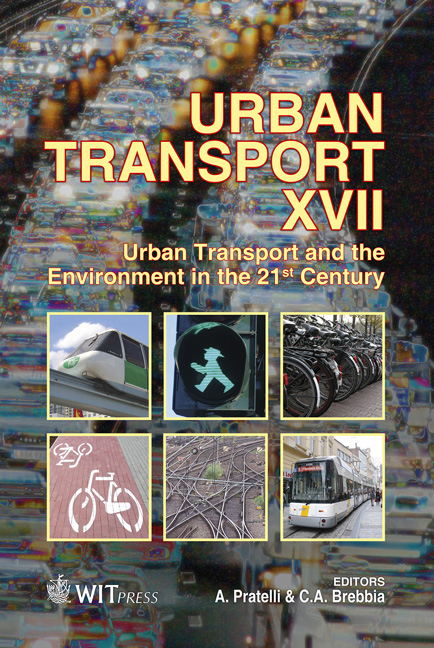Travel Behaviour Studies Facilitate Integration Of Land Use And Transport Planning
Price
Free (open access)
Transaction
Volume
116
Pages
11
Page Range
329 - 339
Published
2011
Size
3,419 kb
Paper DOI
10.2495/UT110281
Copyright
WIT Press
Author(s)
K. Puntambekar
Abstract
Travel behaviour in any city is guided by its land use distribution and transport network and planning. The response of people to the system is travel behaviour. The paper discusses the issues in understanding the travel behaviour of people. The behavioral change in the use of the type of transport is a slow process and can be initiated by providing the infrastructure such that the monetary and temporal benefits are accountable by the user. The inclination towards the use of public transport, walking or other non-motorised transport can be created by integrated land use and transport planning. The two different systems need to work in integration for sustainable development of the urban area. The purpose of the study is to find out how the travel behaviour studies will facilitate the integration of land use and transport planning. With an example the paper will explain how much the travel behaviour depends upon the land use distribution and available transport network. The conclusion of the study states that there is a substantial amount of dependence of the travel behaviour on land use and transport planning. It also puts forward the issues to be addressed to facilitate the integration of land use and transport planning for reduction of use of motorized transport and to promote the use of public transport, walking or other non-motorised transport. Keywords: travel behaviour, land use and transport planning. 1 Introduction The transport of people answers their desire to participate in different activities (like living, working, shopping and recreating) in different places. Land-use patterns therefore would seem to have a potentially large impact on transport.
Keywords
travel behaviour, land use and transport planning





